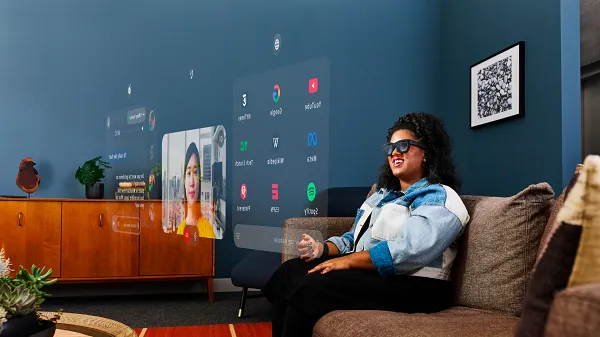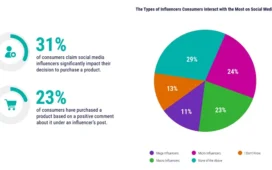So now that we’ve seen Meta’s latest iteration of its AR glasses, in its Orion prototype, which it showcased at its Connect conference last week, we can get some scope of the state of play in AR wearables, and where each of the key players is situated at this stage of the game.
The three considerations here are Meta’s Orion, Snap’s AR Spectacles, and Apple’s VisionPro, all of which have various pros and cons, which may or may not work in their favor in the long run.


As you can see from this comparison, Snap is seemingly behind the others in terms of technical capacity, which a much more limited field of view, though its resolution stats are better within that more limited display.
In terms of weight, Orion is currently well ahead, which has been a key focus of Meta’s development, in building a more lightweight device that incorporates all of the required technology. Indeed, Meta has called the device “a feat of miniaturization.”
Apple’s VisionPro meanwhile has a broader field of view, but that weight seems excessive, and not really compatible with mobile usage.
Which is where Meta looks set to be leading the way, in creating a more viable, day-to-day wearable device that you can use in everyday life. Meta CEO Mark Zuckerberg says that he expects glasses to eventually replace our phones in many applications, and in this context, Meta is seemingly on the right track.
But a lot, of course, comes down to price, and accessibility of the technology.
Meta’s also been hard at work on this aspect. When Apple released the VisionPro last year, Meta CEO Mark Zuckerberg subtly jibed that the product showcased “the difference in the values and the vision that our companies bring”, while also criticizing the low value of the product, in comparison to the Meta Quest.
Meta knows that adoption is key to dominating the market, which is why it’s been hesitant to talk price on the Orion as yet. But Zuckerberg’s confident that the glasses will be available for a price “comparable to the phones and laptops of today” at some stage in the next five years.
But essentially, Meta has increased motivation to reduce the price, and maximize take-up, as part of its broader metaverse vision.
We’ve already seen this with its Quest headsets, which keep dropping in price, despite the technology improving. Because Meta needs more people engaging in its VR experiences, like Horizon Worlds, in order to get more people to join in, and as such, it arguably has more reason than the other players in the space to take a hit on cost, in favor or longer-term gain.
Meta’s going to make money from in-app purchases linked to digital experiences and events. Snap and Apple will be able to offer some of the same, but not at the scale that Meta’s exploring, and eventually, it does seem like Meta’s more likely to maximize take-up due to a critical mass of users and engagement.
Which is the lesson that it’s learned from social apps, and it’s that approach that’ll likely force VisionPro out of the race, if the initial price tag hasn’t already price Apple out of the AR/mixed reality market.
But we don’t know yet, because Meta is still negotiating the best consumer price. But given the rising take-up of its Ray Ban smart glasses Meta knows what people are willing to pay for similar devices, and that could see it better placed to capitalize on market opportunities.
Which is another consideration, in that Meta now has a distribution network, while its partnership with EssilorLuxottica, the maker of Ray Ban, will also help it build more consumer-friendly AR glasses.
Snap’s AR Spectacles are nowhere near as attractive, or likely as comfortable, being double the weight. And really, Snap has unwittingly squandered a key lead that it had in this regard, in that it was once the only provider with a viable consumer product network for smart glasses, which it had established to distribute its Spectacles.
Meta was nowhere close to Snap on this front, but the Meta Ray Bans are now a much bigger seller, eliminating that as an advantage.
So, which AR glasses are ultimately going to win, and is consumer AR going to become a real, significant thing?
Well, on balance, Meta seems to be in the best position to maximize its opportunities, while Snap looks set to struggle to keep up with its more well-resourced competitors in the race.
Apple’s VisionPro is a good device by all accounts, but the price tag is just too high to see mass take-up, while Apple’s also not investing in a broader AR/VR ecosystem to connect people within this experience.
Meta seems to be covering all bases, and its glasses are the only ones that you can see anyone viably wearing in their day-to-day life.
So Meta does appear to be in the lead, but there’s much development to come, and a lot of things could change.
But is AR actually going to be a thing? I would say that it absolutely is. And while only a small percentage of people have actually had the opportunity to experience these next-level AR devices, the broader trends around the adoption of smart glasses, combined with advances in other, related areas (AI), point to Meta’s long-held, much-criticized metaverse vision looking smarter every day.








